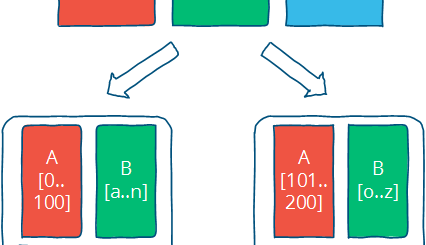Airbnb’s Microservice Architecture
Airbnb’s journey from a monolithic Ruby on Rails application to a more complex, service-oriented architecture highlights the adaptability required for scaling. Initially, the simplicity allowed engineers to handle end-to-end features within one codebase, minimizing dependencies. However, rapid growth necessitated a shift towards specialized teams and clearer ownership, revealing the limitations of a tightly coupled system. This evolution underscores the importance of flexible architecture in supporting organizational expansion and enhancing developer efficiency.
As Airbnb’s team expanded significantly, the limitations of its monolithic architecture became starkly evident, notably through prolonged deployment times. Initially manageable deployment durations ballooned to several hours or even days, severely impacting developer productivity and morale. This situation highlighted the pressing need for an architectural overhaul to sustain the growing engineering workforce and maintain agility in development processes, marking a pivotal moment for Airbnb’s technological evolution.
Microservices
Airbnb transitioned to a microservices architecture, categorizing services into four distinct types for enhanced organization and efficiency: data fetching services for reading and writing data, business logic services for applying functions and combining data, workflow services for managing write orchestrations across multiple services, and UI aggregation services for assembling user interfaces. This restructuring included moving from a monolithic frontend to separate React services, all orchestrated behind an API gateway, streamlining operations and improving scalability.
To address the challenges of ownership in their monolithic architecture, Airbnb established clear ownership of services by assigning each service to a single team. This approach simplified management, as each team could own multiple services but the boundaries and responsibilities were clearer. The introduction of mandatory review processes for changes also ensured that the owning team had oversight on modifications. Moreover, Airbnb shifted its team structures from full-stack to specialized teams focusing on backend, data services, complex business logic, and even a dedicated team for the monolith-to-microservice migration, enhancing focus and expertise in specific areas.
In transitioning to a microservices architecture, Airbnb saw a transformation in team collaboration dynamics. The move necessitated a broader awareness among teams of the larger service ecosystem, recognizing dependencies and necessary interactions outside their immediate domains. This shift highlighted the importance of aligning priorities across teams for the seamless execution of features, illustrating the complexity of managing an expansive network of services and their interdependencies. This evolution brought forward new operational challenges as the organization scaled.
Micro and Macroservices
In response to challenges with microservices, Airbnb is exploring a hybrid model of micro and macroservices aimed at API unification. This approach involves centralizing data access through a GraphQL interface, streamlining interactions between services. The model retains the flexibility of microservices while introducing a simplified facade API for better abstraction and management. This structural evolution also led to more specialized team roles, focusing on product development and performance optimization, ensuring a more efficient and focused approach to building and maintaining Airbnb’s expansive service architecture.
To further address architectural complexities, Airbnb’s strategic shift to a hybrid of micro and macroservices simplifies API interactions, ensuring efficient data management through a centralized GraphQL interface. This new structure promotes a clearer division of labor, with teams dedicated to specific functions such as performance optimization and product focus, enhancing overall productivity and service coherence in supporting Airbnb’s dynamic marketplace.
Migration Hits and Misses
Airbnb’s iterative approach to addressing challenges involves identifying problems, devising solutions, encouraging adoption, and scaling effectively until new challenges arise. This cycle of continuous improvement and adaptation has been central to Airbnb’s evolution, highlighting the importance of flexibility, user engagement, and scalability in technology development.
Reflecting on its journey, Airbnb identifies a cyclical pattern of problem-solving and adaptation, encompassing both successes and areas for improvement. This cycle starts with identifying a challenge, developing a solution, motivating adoption, and scaling the solution until it, too, may lead to new challenges. This iterative process emphasizes the need for continuous evaluation and adjustment, ensuring Airbnb remains adaptable and innovative in addressing the evolving needs of its community and market.
Reflecting on its journey, Airbnb identifies a cyclical pattern of problem-solving and adaptation, encompassing both successes and areas for improvement. This cycle starts with identifying a challenge, developing a solution, motivating adoption, and scaling the solution until it, too, may lead to new challenges. This iterative process emphasizes the need for continuous evaluation and adjustment, ensuring Airbnb remains adaptable and innovative in addressing the evolving needs of its community and market.
To enhance the transition from a monolithic architecture to a service-oriented approach, Airbnb encountered initial challenges with service setup and maintenance, requiring significant time and effort. In response, Airbnb prioritized the simplification of this process through the development of an infrastructure-as-code system, integrating service configurations, including Kubernetes setups, into a simplified, configuration-based format within the same repository. This strategic investment aimed to reduce the initial setup time, thereby encouraging engineers to migrate to the new system, attracted by the prospects of easier service management and quicker deployment cycles.
To further facilitate the migration from a monolithic architecture to microservices, Airbnb recognized the importance of reducing the complexity and setup time for new services. By investing in an infrastructure-as-code strategy, they streamlined the process, making it more appealing for engineers to adopt microservices. This approach, by simplifying the integration of service configurations and Kubernetes setups, significantly lowered the barrier for service deployment, aligning with Airbnb’s goal of enhancing system flexibility and deployment efficiency.



